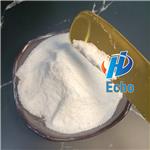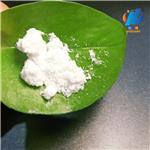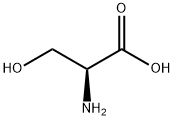L-Serine: an essential compound with key roles in physiological activities
Jul 20,2023
General Description
L-Serine, a vital metabolite, plays an indispensable role in various physiological activities. L-Serine plays important physiological roles in the central nervous system, including energy metabolism and brain function. It is involved in the compartmentation of energy metabolic pathways between neurons and glial cells, contributing to brain energy metabolism. L-Serine also plays a crucial role in DNA synthesis and repair by participating in the de novo thymidylate biosynthetic pathway. Furthermore, L-Serine has implications for fatty acid metabolism, offering potential in managing fatty liver disease. In biomedical research, L-Serine shows promise as a therapeutic agent for neurodegenerative diseases and as a supplement for cognitive enhancement and mood improvement. Additionally, L-Serine serves as a valuable precursor in biotechnology for the production of pharmaceuticals, agrochemicals, and industrial enzymes. Overall, L-Serine has diverse applications in both health and industrial sectors.

Figure 1. L-Serine
Physiological activities
Formation and maintenance of the central nervous system
The compartmentation of energy metabolic pathways between neurons and glial cells has been highlighted by recent studies. L-Serine biosynthesis in glial cells plays a crucial role in brain energy metabolism. While the main purpose of brain energy metabolism is to generate ATP for the high information processing demands, a significant portion of glucose (10-15%) is diverted away from ATP production and used for other functions. Understanding the mechanisms that regulate the flux through the L-Serine metabolic pathway is essential. Studies have begun unraveling the roles of L-Serine in both healthy and diseased brain states. It has been observed that this specific metabolic pathway linking glial metabolism with synaptic activity and plasticity has implications for brain function. The evidence suggests that maintaining astrocyte-mediated homeostasis of L-Serine could hold potential as a therapeutic strategy for addressing brain disorders. Restoring proper levels of L-Serine and balancing glial metabolism may offer new avenues for treatment. In summary, L-Serine's physiological functions include its involvement in the compartmentation of energy metabolic pathways between neurons and glial cells, playing a vital role in brain energy metabolism. Its biosynthesis in glial cells, particularly astrocytes, through the phosphorylated pathway connects glial metabolism with synaptic activity, plasticity, and overall brain function. Exploring strategies to restore astrocyte-mediated L-Serine homeostasis holds promise for developing new therapeutic approaches for brain disorders. 1
DNA synthesis and repair
L-Serine plays a pivotal role in DNA synthesis and repair by participating in the de novo thymidylate biosynthetic pathway. This pathway, consisting of enzymes such as serine hydroxymethyltransferase 1 and 2α (SHMT1 and SHMT2α), thymidylate synthase, and dihydrofolate reductase, translocates to the nucleus for DNA replication and repair. Through this study, it has been revealed that these enzymes form a multienzyme complex associated with the nuclear lamina. The presence of either SHMT1 or SHMT2α is crucial for the co-localization of dihydrofolate reductase, SHMT, and thymidylate synthase at the nuclear lamina. This indicates that SHMT acts as a scaffold protein essential for the formation of the complex. Furthermore, this metabolic complex shows enrichment at sites where DNA replication initiates and is associated with key components of the DNA replication machinery, including proliferating cell nuclear antigen. These findings provide a mechanism for previous studies highlighting the rate-limiting role of SHMT expression in de novo thymidylate synthesis. They also suggest that de novo thymidylate biosynthesis occurs at replication forks, emphasizing the significance of L-Serine in supporting DNA synthesis and repair processes. 2
Fatty acids metabolism
L-serine plays a crucial role in fatty acid metabolism, particularly in relation to fatty liver disease. L-serine supplementation was found to improve alcoholic fatty liver by enhancing L-serine-dependent homocysteine metabolism. The researchers discovered that L-serine increases cellular NAD+ levels and activates SIRT1, a key enzyme involved in cellular metabolism and mitochondrial biogenesis. This activation of SIRT1 leads to enhanced mitochondrial function, improved fatty acid metabolism, and increased insulin sensitivity. These findings highlight the potential of L-serine in regulating metabolic pathways associated with fatty liver disease. In conclusion, L-serine shows promise as a therapeutic target for managing fatty liver and related conditions. 3
Applications
In the realm of biomedical research, L-serine has shown promise as a therapeutic agent for conditions like neurodegenerative diseases, including Alzheimer's and Parkinson's. It is believed to support neurotransmitter production and promote neuronal health. Additionally, L-serine supplementation has been explored for its potential benefits in enhancing cognitive function, reducing anxiety, and improving mood. In the field of biotechnology, L-serine is used as a precursor for the production of valuable compounds such as pharmaceuticals, agrochemicals, and industrial enzymes. Its versatile applications make L-serine a compound with significant potential in both health and industrial sectors.
Reference
1. Maugard M, Vigneron PA, Bola?os JP, Bonvento
G. l-Serine links metabolism with neurotransmission. Prog Neurobiol,
2021, 197:101896.
2. Anderson DD, Woeller CF, Chiang EP, Shane B, Stover PJ. Serine hydroxymethyltransferase anchors de novo thymidylate synthesis pathway to nuclear lamina for DNA synthesis. J Biol Chem, 2012, 287(10):7051-7062.
3. Sim WC, Kim DG, Lee W, Sim H, Choi YJ, Lee BH. Activation of SIRT1 by L-serine increases fatty acid oxidation and reverses insulin resistance in C2C12 myotubes. Cell Biol Toxicol, 2019, 35(5):457-470.
- Related articles
- Related Qustion
- L-Serine: Biosynthesis and Potential Therapeutic Role in Diabetes Jun 7, 2024
L-Serine's biosynthesis and regulatory enzymes play a vital role in cellular demands, insulin sensitivity, and potential therapeutic implications for diabetes and its complications.
- Structure and function of L-serine Dec 20, 2021
L-serine is the L-enantiomer of serine. It has a role as a human metabolite, an algal metabolite, a Saccharomyces cerevisiae metabolite, an Escherichia coli metabolite and a mouse metabolite. It is a serine family amino acid, a proteinogeni
Pyromellitic dianhydride has various applications in polymer synthesis, wastewater treatment, solar cell fabrication, but it also has toxicity concerns.....
Jul 20,2023APIα-Lipoic acid exhibits a wide range of potential health benefits, including antioxidant activity, antidiabetic effects, and anticancer properties.....
Jul 20,2023APIL-Serine
56-45-1You may like
- L-Serine
-

- $5.00 / 25kg
- 2024-06-07
- CAS:56-45-1
- Min. Order: 1kg
- Purity: ≥98%
- Supply Ability: 200mt/year
- L-serine powder
-

- $30.00/ kg
- 2024-04-19
- CAS:56-45-1
- Min. Order: 1kg
- Purity: 99.7%
- Supply Ability: 200000kg
- L-Serine
-

- $50.00 / 1kg
- 2024-04-18
- CAS:56-45-1
- Min. Order: 1kg
- Purity: 99.10%
- Supply Ability: 50000kg




